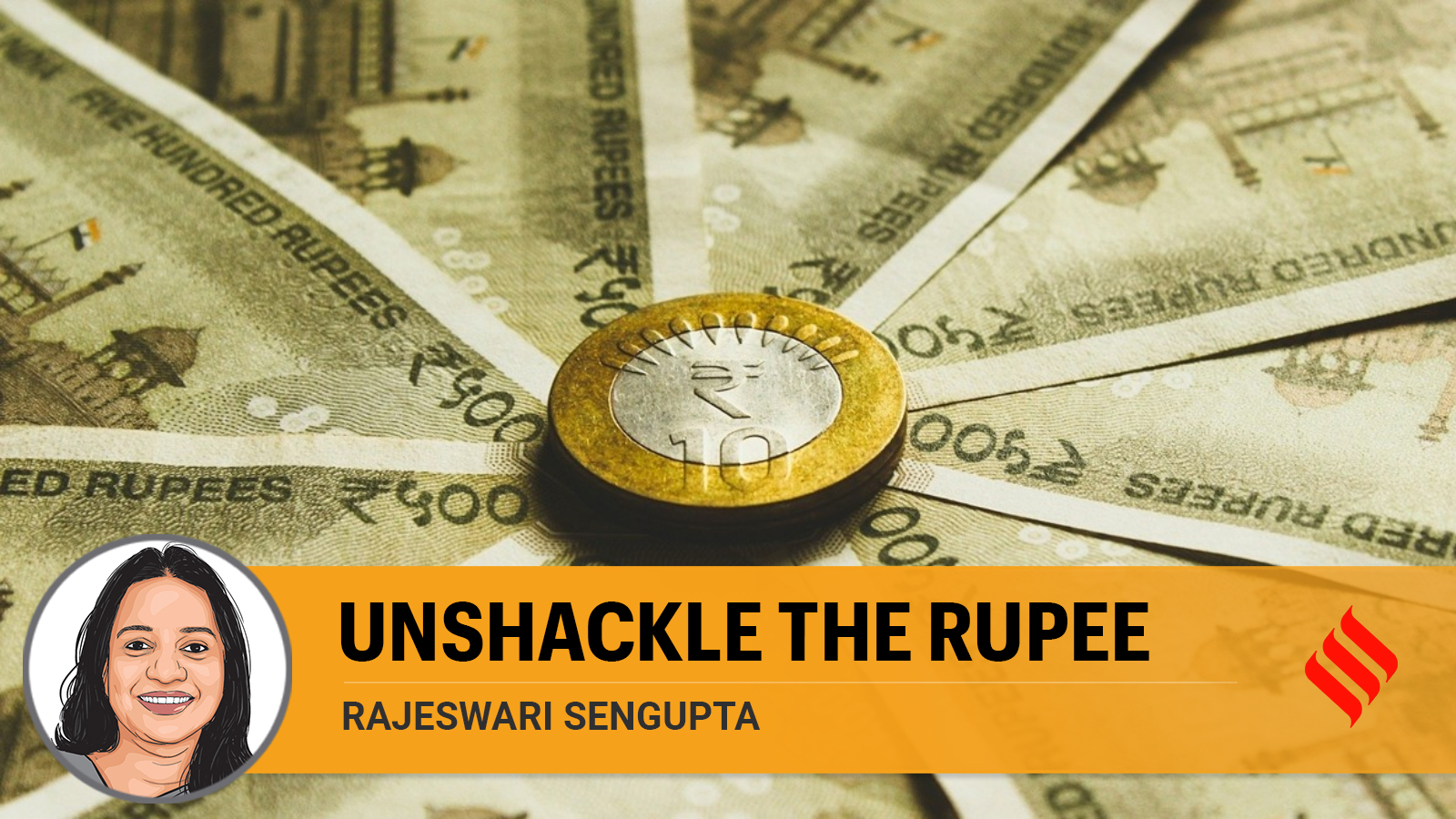Recently, there have been several reports about the stability of the rupee against the US dollar. This is typically described as a positive development. But the central bank’s decision to control the exchange rate is deeply problematic.
Admittedly, the Reserve Bank of India (RBI) has always intervened in the foreign exchange market to smooth out fluctuations of the rupee. However, since 1991, the intervention has never been as great as it is today. The data speaks for itself. Over the two decades through 2020, the average annual volatility (that is to say, the movement) of the rupee-dollar (INR-USD) rate typically ran around 5 per cent. But between April 2023 and August 2024, the average volatility collapsed to 1.9 per cent, an extraordinarily low level not only compared to India’s own past but also its emerging economy peers. To be clear, if exchange rate stability comes about as a natural outcome of market forces, it is welcome. For example, the euro-dollar exchange rate is one of the most stable, not because their central banks regularly intervene in the market — they do not — but because a vast number of players are freely able to take money in and out of these financial markets, creating huge but roughly balanced cross-border movements of capital, which keep the exchange rate stable.
The rupee’s recent stability, however, has not been driven by market forces. It has come about due to an apparent change in the RBI’s currency policy. Since late 2022, the RBI has decided to actively intervene on both sides of the foreign exchange market, on some days buying dollars to prevent the rupee from appreciating and on other days selling dollars to prevent depreciation. It is only a small exaggeration to say that without any announcement or public debate, the rupee has become pegged to the dollar.
There are several fundamental problems with this change in currency policy. To begin with, it goes against basic economic principles. For any country that aspires to be a developed economy, the price of any good, service or asset should not be determined by the state. Just as we do not want the price of tomatoes or computers to be fixed by the state, it is not a good idea to fix the price of the rupee either. The price should instead be left to the market. This is because the price system in a market economy performs a crucial function: It conveys information about demand and supply to buyers and sellers, who can then adjust their behaviour accordingly. As each group responds to this signal, demand is gradually brought into balance with supply.
In contrast, when the state sets the price, the information system gets distorted. One only needs to look at India’s own history to see what can go wrong. In the pre-1991 era, controlled prices led to shortages of nearly every major good that people wanted to buy, such as cars or telephones. Most scarce of all were imports, which people could not obtain easily because the pegged exchange rate led to shortages of foreign exchange. Ultimately, these problems led to the crisis of 1991, when the entire system broke down. This is not a uniquely Indian story. The list of countries that got into serious trouble after pegging their exchange rate is a long one, including major economies such as Argentina, Brazil, Mexico, Russia, South Korea, Thailand and Turkey. That is why nearly all emerging economies have decided in recent years to free their exchange rates.
So much for theoretical principles. What about practice? After all, sometimes the practical problems of a theoretically-best policy can be so large that it simply needs to be abandoned. But that was not the case here, which brings us to the next problem with the new currency policy: It did away with a long-standing system that was working perfectly well.
The previous flexible exchange rate policy had two practical advantages. First, the exchange rate moved up or down over the business cycle which in turn helped smooth out output fluctuations. During periods of high growth when exports were growing and foreign capital was flowing in, the rupee appreciated which prevented the economy from overheating. When the economy was in a downturn, the rupee depreciated, making Indian goods and services more attractive to foreigners, and promoting an export-led recovery.
Second, because these ups and downs balanced each other out, over long periods there was stability in the real exchange rate, that is the exchange rate adjusted for the difference in inflation between India and its trading partners. In contrast, the new inflexible system has already led to a significant real exchange rate appreciation, thereby making India’s exports more costly to foreigners, and potentially undermining the Make in India drive.
All these bring us to the final problem — the lack of transparency. The central bank seldom communicates about its currency policy. As a result, it is not well understood why the RBI felt the need to break with a long-standing practice and bind the rupee so tightly to the dollar. It is also not clear whether this is a temporary policy or a more long-lasting change.
Consequently, private sector participants in the foreign exchange market are confused. They need to guess when they see imbalances in the market, such as capital flows exerting pressure on the exchange rate. Will the central bank intervene to prevent the exchange rate from moving? If so, when, by, how much, or in which direction? No one knows. So, they do not know how to respond.
The exchange rate is the most important price in a market economy. If India wants to become a high-income economy, the exchange rate needs to respond freely to market forces, sending appropriate signals to market participants. If, instead, the market gets distorted merely to stabilise the currency, this may prove costly in the long run.
The writer is associate professor of Economics, IGIDR



